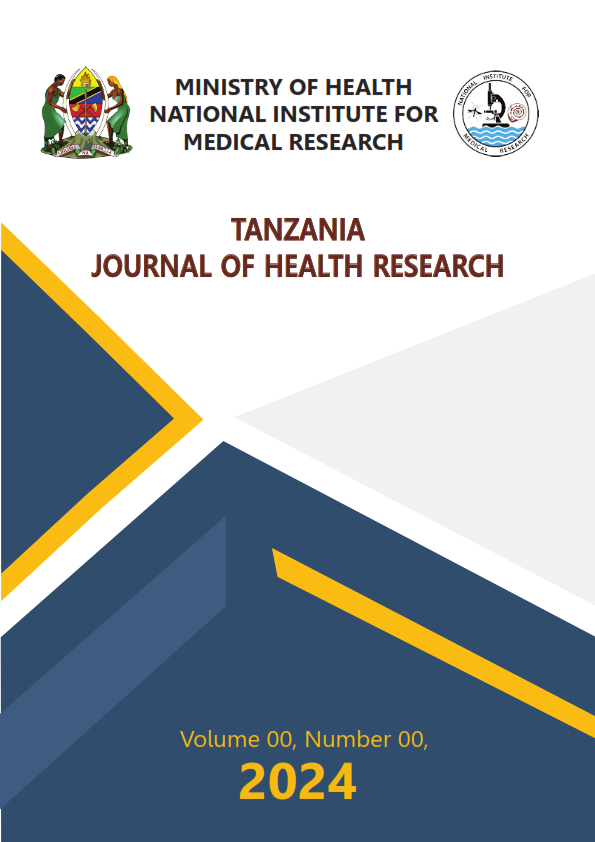Main Article Content
Clinical Presentation and Outcomes of COVID-19 Patients Supplemented with Approved Herbal Preparations in Tanzania: A Cohort Study
Abstract
Introduction: During the COVID-19 pandemic, there was no known specific treatment for coronavirus Disease. Because of this, different countries and institutions have used different regimens to manage disease symptoms. In Tanzania, well-known and long-used herbal preparations believed to have antiviral activities were used as supplements to standard care for COVID-19 management. This study assessed the clinical presentation and outcomes of hospitalized COVID-19 patients receiving standard care plus herbal preparations in Tanzania.
Methods: An observational cohort study was conducted between February and May 2021 at 12 health facilities. Sociodemographic information, clinical presentation, past medical history, baseline, and follow-up laboratory records were documented. Each study participant was followed up for 14 days from enrolment.
Results: 285 participants were enrolled; their mean age was 59.2 ± 16.5 years, and males constituted 56% of the study participants. Nearly 33% were aged 50 years and above. The majority (72%) reported having at least one form of co-morbidities (raised blood pressure, diabetes mellitus, asthma, Chronic Obstructive Pulmonary Diseases (COPD) and other forms of heart problems apart from hypertension). More than 60% of the study participants reported to have used at least one form of locally available herbal preparations. Symptoms and signs reported at enrolment subsided relatively faster among those supplemented with herbal preparations than among their counterparts. PCR results of nearly 66% of the study participants had converted to PCR negative at different rates by day 7 (61 vs 78%) and by day 14 (64.3% vs 36.4%) among herbal and non-herbal users, respectively. Overall, proportionally mortality was higher among those who used standard care alone (23.3% vs 16.9%) compared to those supplemented with herbal preparations.
Conclusion: The use of herbal preparations in addition to standard care treatment showed a positive effect in subsiding signs and symptoms and decreasing mortality among COVID-19 patients. The findings from this study call for further research, especially clinical trials, to ascertain these findings.






